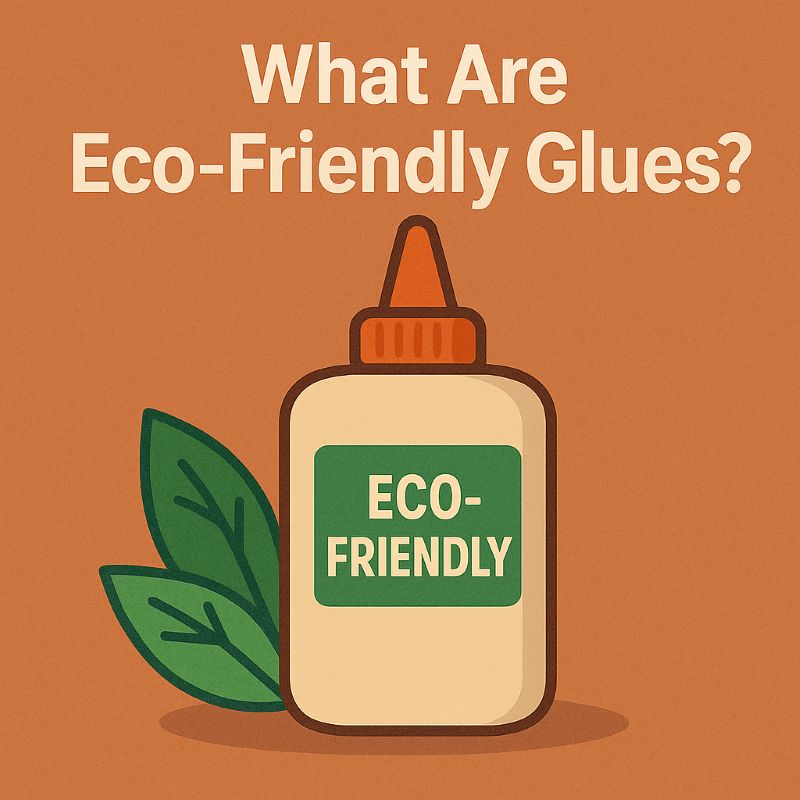
What Are Eco-Friendly Glues?
Classifying Green Adhesives
Significance of Sustainable Glues
Eco Glue Manufacturing Methods
Current Trends in Eco Adhesives
Effective Use of Green Glues
Strategic Developments in Adhesives
Frequently Asked Questions (FAQ)
Eco-friendly glues are adhesives developed to reduce environmental harm through the use of natural or biodegradable ingredients. Unlike conventional adhesives that rely on petrochemical compounds, these sustainable alternatives are derived from renewable sources. They are suitable for various applications, including crafting, general repairs, and woodworking, and are favored for their low toxicity and safe indoor use.
Green adhesives fall into distinct categories based on their source and composition:
Plant-based adhesives: Derived from renewable resources such as starch or soy.
Water-based adhesives: Emulsions with low levels of volatile organic compounds (VOCs).
Solvent-free adhesives: Formulated without harsh solvents to ensure safer air quality.
These adhesives are valued for their environmental benefits, including biodegradability, minimal VOC emissions, and compatibility with green building or sustainable manufacturing standards.
Sustainable glues are essential in reducing carbon footprints and limiting exposure to harmful substances. By using materials sourced from renewable origins and eliminating hazardous additives, these glues support indoor air quality and align with global sustainability targets. They help both consumers and industries adopt more responsible practices while maintaining strong bonding performance across applications.
Eco glue manufacturing emphasizes:
Use of bio-based polymers, such as those extracted from soy, corn, or natural rubber.
Water-based formulations that reduce or eliminate solvent use.
Energy-efficient processing to minimize the carbon footprint of production.
These methods ensure the end product is biodegradable, low-emission, and aligned with environmental standards, making them suitable for both consumer and industrial markets.
Recent developments in the adhesive industry include:
Bio-based adhesives made from rapidly renewable resources
Water-based alternatives with reduced emissions for indoor use
Recycled content integration to promote a circular production model
Nanotechnology applications to enhance adhesive strength and versatility
These trends reflect a larger movement toward sustainability in materials science, addressing the dual need for performance and environmental responsibility.
To maximize the performance of green adhesives:
Match the adhesive to the application: Use light-duty options for crafting, water-resistant ones for woodworking, and general-purpose types for everyday bonding.
Prepare surfaces properly: Clean, dry surfaces enhance adhesion strength.
Follow instructions: Application methods and curing times differ across formulations.
Responsible use of eco-friendly adhesives not only optimizes results but also supports environmentally sound practices at home and in industry.
Adhesive innovation is increasingly aligned with sustainable development strategies. Major advances include:
Substitution of petrochemicals with bio-derived ingredients
Integration of recycled and upcycled materials into formulations
Performance enhancements through natural additives and processing improvements
These developments are shaping a future in which adhesives support eco-certification, comply with international environmental regulations, and meet growing consumer demand for greener products.
What are eco-friendly glues?
They are adhesives made from biodegradable or natural components that reduce environmental harm compared to traditional synthetic glues.
What types of green adhesives exist?
Common types include plant-based, water-based, and solvent-free adhesives, each offering low toxicity and improved environmental safety.
Why are sustainable adhesives important?
They reduce harmful emissions, support healthier environments, and help transition to low-impact manufacturing and construction practices.
How are eco-friendly glues manufactured?
Using renewable raw materials and water-based or enzymatic processes that limit energy use and emissions.
What are current trends in green adhesive technologies?
Growing adoption of bio-based materials, reduced-VOC formulations, and integration of circular economy principles in production.
How should green glues be used effectively?
Select the appropriate type, prepare surfaces properly, and follow usage guidelines to ensure optimal performance and environmental benefit.
Are there alternatives to brand-name eco glues?
Yes. Many private-label and industrial-grade adhesives now offer eco-conscious formulations for crafting, woodworking, and general bonding.
What strategic changes are shaping the adhesive market?
The push for sustainability is driving innovations in raw materials, manufacturing processes, and product performance.